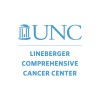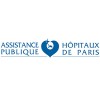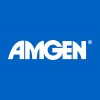
Prospective Clinical Study of ZPR Regimen in Elderly Treatment-naive Diffuse Large B-cell Lymphoma...
Diffuse Large B Cell LymphomaThis is a prospective, single-arm, single-center clinical study. This clinical study aims to explore the efficacy and safety of the ZPR(Zanubrutinib, Polatuzumab vedotin and Rituximab)regimen in elderly patients with treatment-naive diffuse large B-cell lymphoma.

Tafasitamab, Acalabrutinib, and Obinutuzumab for the Treatment of Previously Untreated Chronic Lymphocytic...
Chronic Lymphocytic LeukemiaThis phase Ib trial tests the safety and effectiveness of tafasitamab, acalabrutinib, and obinutuzumab in treating patients with newly diagnosed chronic lymphocytic leukemia (CLL). CLL is a type of cancer that develops from a specific white blood cell called B cells or B lymphocytes. Tafasitamab and obinutuzumab are monoclonal antibodies that may interfere with the ability of cancer cells to grow and spread. Acalabrutinib is in a class of medications called kinase inhibitors. It blocks a protein called BTK, which is present on B-cell cancers such as CLL at abnormal levels. This may help keep cancer cells from growing and spreading. Giving tafasitamab, acalabrutinib, and obinutuzumab may kill more cancer cells in patients with newly diagnosed CLL.

Dupilumab in Adolescent and Adult Skin of Color Participants: Open-label Moderate-to-severe Eczema...
Moderate-to-Severe Atopic DermatitisAtopic EczemaThe study is focused on skin of color participants who have moderate-to-severe atopic dermatitis. Atopic dermatitis, also referred to as eczema, is a condition that causes the skin to become itchy, dry, and cracked. From the previous studies on the study drug, it is seen that the study drug has an acceptable safety and effectiveness in participants with atopic dermatitis. The aim of this study is to get additional information on the safety and effectiveness of the study drug, particularly the information on aspects of atopic dermatitis in skin of color participants. The study is looking at several other research questions, including: What side effects may happen from taking the study drug How much study drug is in your blood at different times How much the study drug improves quality of life and mental health

Study of CD30 CAR for Relapsed/Refractory CD30+ HL and CD30+ NHL
LymphomaLymphoma7 moreThe body has different ways of fighting infection and disease. No single way seems perfect for fighting cancer. This research study combines two different ways of fighting disease: antibodies and T cells. Antibodies are proteins that protect the body from disease caused by bacteria or toxic substances. Antibodies work by binding those bacteria or substances, which stops them from growing and causing bad effects. T cells, also called T lymphocytes, are special infection-fighting blood cells that can kill other cells, including tumor cells or cells that are infected. Both antibodies and T cells have been used to treat patients with cancers. They both have shown promise, but neither alone has been sufficient to cure most patients. This study is designed to combine both T cells and antibodies to create a more effective treatment called autologous T lymphocyte chimeric antigen receptor cells targeted against the CD30 antigen (ATLCAR.CD30) administration. In previous studies, it has been shown that a new gene can be put into T cells that will increase their ability to recognize and kill cancer cells. The new gene that is put in the T cells in this study makes an antibody called anti-CD30. This antibody sticks to lymphoma cells because of a substance on the outside of the cells called CD30. Anti-CD30 antibodies have been used to treat people with lymphoma, but have not been strong enough to cure most patients. For this study, the anti-CD30 antibody has been changed so that instead of floating free in the blood it is now joined to the T cells. When an antibody is joined to a T cell in this way it is called a chimeric receptor. These CD30 chimeric (combination) receptor-activated T cells seem to kill some of the tumor, but they do not last very long in the body and so their chances of fighting the cancer are unknown. The purpose of this research study is to establish a safe dose of ATLCAR.CD30 cells to infuse after lymphodepleting chemotherapy and to estimate the number patients whose cancer does not progress for two years after ATLCAR.CD30 administration. This study will also look at other effects of ATLCAR.CD30 cells, including their effect on the patient's cancer.

A French Protocol for the Treatment of Acute Lymphoblastic Leukemia (ALL) in Children and Adolescents...
Acute Lymphoblastic LeukemiaA still major question in the field of acute lymphoblastic leukemia (ALL) in children - an extremely heterogeneous disease though curable in 80-90% of children and 70-80% of the adolescents - is the optimal use of L-asparaginase (ASNase). It is known that administering ASNase results in the depletion of asparagine circulating in the blood, which starves the leukemic cells and results in their death. But indeed the use of ASNase varies between protocols considering the different brands, the dose and the administration modalities. Oncaspar (PEGylated E. coli asparaginase, pegaspargase) was thus developed with the goal of reducing the immunogenicity of the native ASNase. This is a French prospective multicentric cohort study of children and adolescents with ALL, stratified on (i) the type of ALL ( B vs T) and (ii) the anticipated risk (stratified in 3 groups for childhood B-cell precursor (BCP)-ALL and 2 groups for T-cell ALL). It aims to answer to two different issues: Randomized question: what is the best way to administer pegaspargase? A cohort of children and adolescents with standard or medium risk ALL will be randomized to receive during induction either one infusion of ONCASPAR® 2500 IU/m2 at D12 or two infusions of ONCASPAR® at 1250 IU/m2 each at D12 and D26. Patients will then receive 2500 IU/m2 or 1250 IU/m2 per dose during consolidation and delayed intensification according to the initial arm of randomization. Non randomized question: In the High/Very High Risk groups, a non randomized intensification of the scheme of asparaginase administration is proposed during induction therapy: 2 infusions of 2500 IU/m2/day (D12 and D26) will be administered. All patients will receive 2500 IU/m2 per dose during consolidation and delayed intensifications.

A Phase II Study of Single Agent Brentuximab Vedotin in Relapsed/Refractory CD30 Low (<10%) Mature...
T-cell LymphomaAngioimmunoblastic T-cell Lymphoma4 moreThis study will include patients with mature T-cell lymphoma (MTCL) that has been treated with at least one type of chemotherapy, but is not responding or coming back after the previous treatment. This clinical trial uses a drug called Brentuximab Vedotin. The Food and Drug Administration (FDA) has approved Brentuximab Vedotin for sale in the United States for certain diseases. Brentuximab is still being studied in clinical trials like this one to learn more about what its side effects are and whether or not it is effective in the disease or condition being studied. Brentuximab Vedotin is a type of drug called an antibody drug conjugate (ADC). ADCs usually have 2 parts; a part that targets cancer cells (the antibody) and a cell killing part (the chemotherapy). Antibodies are proteins that are part of your immune system. They can stick to and attack specific targets on cells. The antibody part of Brentuximab Vedotin sticks to a target called CD30. CD30 is an important molecule on some cancer cells (including non Hodgkin lymphoma) and some normal cells of the immune system. The cell killing part of Brentuximab Vedotin is a chemotherapy called monomethyl auristatin E (MMAE). It can kill cells that the antibody part of Brentuximab Vedotin sticks to. Brentuximab Vedotin has also been shown to kill cancer cells with levels of CD30 that cannot be seen by traditional methods. This study is being done to test if the study drug has an effect on Mature T cell Lymphoma with such low levels of a target called CD30 and how your disease respond to the study drug.

Study of Carfilzomib in Combination With Induction Chemotherapy in Children With Relapsed or Refractory...
Acute Lymphoblastic Leukemia (ALL)The purpose of Phase 1b of this study is to: Asses the safety, tolerability and activity of carfilzomib, alone and in combination with induction chemotherapy, in children with relapsed or refractory acute lymphoblastic leukemia (ALL). Determine the maximum tolerated dose (MTD) and to recommend a phase 2 dose of carfilzomib in combination with induction chemotherapy. The purpose of Phase 2 of this study is to compare the rate of complete remission (CR) of carfilzomib in combination with vincristine, dexamethasone, PEG asparaginase, daunorubicin (VXLD) at the end of induction therapy to an appropriate external control.

Bruton's Tyrosine Kinase (BTK) Inhibitor, Ibrutinib, in Patients With Newly Diagnosed or Refractory/Recurrent...
Adult Patients With Newly Diagnosed or Relapsed or Refractory Primary Central Nervous System Lymphoma (PCNSL)Or Relapsed or Refractory Secondary Central Nervous System Lymphoma (SCNSL)The purpose of this study is to test any good or bad effects of the study drug called of ibrutinib (also known as Imbruvica™). At this stage of this trial, the study is investigating whether Ibrutinib can be incorporated into the established first-line chemotherapy regimen rituximab, methotrexate, vincristine, and procarbazine (R-VMP) in order to further refine the first-line induction therapy for PCNSL, as observed by a superior CRR (complete response rate) (ARM D RECRUITING ONLY)

Intensity Modulated Total Marrow Irradiation, Fludarabine Phosphate, and Melphalan in Treating Patients...
Previously Treated Myelodysplastic SyndromeRecurrent Adult Acute Lymphoblastic Leukemia2 moreThis phase I trial studies the side effects and the best dose of intensity modulated total marrow irradiation (IMTMI) when given together with fludarabine phosphate and melphalan in treating patients with cancers of the blood (hematologic) that have returned after a period of improvement (relapsed) undergoing a second donor stem cell transplant. IMTMI is a type of radiation therapy to the bone marrow that may be less toxic and may also reduce the chances of cancer to return. Giving fludarabine phosphate, melphalan, and IMTMI before a donor stem cell transplant may help stop the growth of cells in the bone marrow, including normal blood-forming cells (stem cells) and cancer cells. It may also stop the patient's immune system from rejecting the donor's stem cells. When the healthy stem cells from a donor are infused into the patient they may help the patient's bone marrow make stem cells, red blood cells, white blood cells, and platelets.

The Safety and Efficacy of "3-Hole" Subxiphorid Approach in the Treatment of Anterior Mediastinal...
ThymectomyMyasthenia GravisSurgery plays an important role in the treatment of anterior mediastinum disease. The major surgical approaches include: cervical approach, mid-sternal approach, cervical combined mid-sternal approach and video-assisted thoracoscopic approach. The cervical approach is rarely adopted because of its restricted visual field. The cervical combined mid-sternal approach have a broader field of vision, given this advantage, the surgeon can remove the thymus and its surrounding fat tissue more thoroughly. But the trauma of this approach is much larger, and the postoperative complication is also a serious problem. The video-assisted thoracoscope is often adopted by left or right approach, this minimally invasive procedure can not remove anterior mediastinum fat thoroughly. In clinical practice, the investigators designed a new method named "3-Hole" subxiphoid approach. This study is designed to compare the safety and validity between this new method and others.
